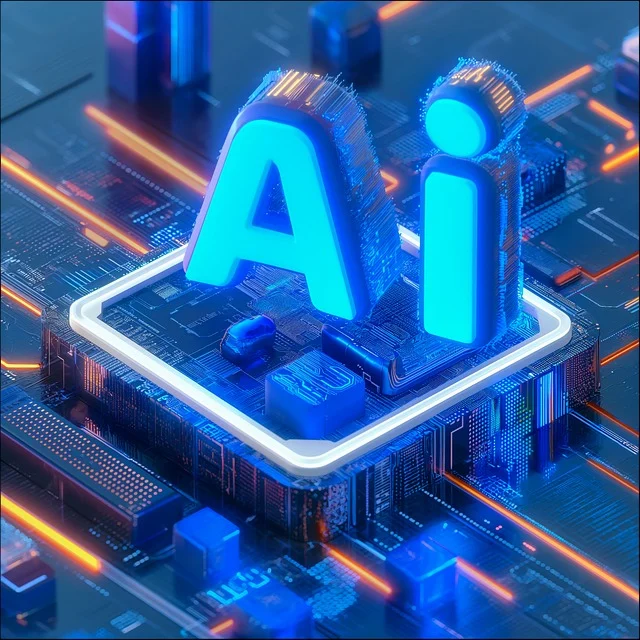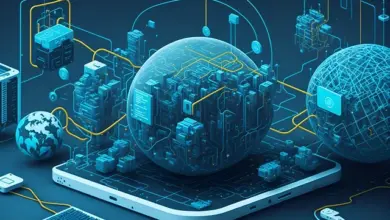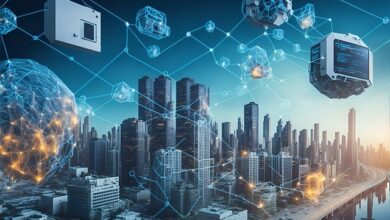
Artificial Intelligence (AI) is no longer a concept confined to science fiction or research labs; it is now deeply integrated into our daily routines, shaping how we work, interact, and make decisions. From virtual assistants like Siri and Alexa to personalized recommendations on streaming platforms, AI has woven itself into the fabric of modern life. As technology advances, AI’s impact continues to grow, influencing sectors such as healthcare, education, transportation, entertainment, and more. This article delves into the multifaceted ways in which AI affects everyday life, highlighting both its benefits and challenges.
AI in Communication and Personal Assistance
One of the most visible ways AI has entered our lives is through communication tools and virtual assistants. Devices powered by AI, such as smartphones and smart speakers, have revolutionized how we interact with technology. Virtual assistants like Apple’s Siri, Amazon’s Alexa, and Google Assistant use AI to process voice commands, provide information, and perform tasks ranging from setting reminders to controlling smart home devices.
These AI systems rely on natural language processing (NLP) algorithms, allowing them to understand and respond to human language in a conversational manner. As AI evolves, these assistants are becoming more personalized, learning user preferences and adapting to individual needs. For example, AI-based algorithms in emails and messaging apps can predict responses, correct grammar, and filter out spam, streamlining communication processes.
While convenient, the rise of AI-driven communication tools also raises concerns about privacy and data security. These systems often collect vast amounts of personal information to improve user experiences, leading to debates on how much access individuals should allow.
AI in Healthcare
The healthcare industry has seen some of the most profound advancements due to AI. AI-powered diagnostic tools are revolutionizing patient care by offering more accurate and timely diagnoses. For instance, AI can analyze medical images such as X-rays and MRIs to detect diseases like cancer at early stages, often more efficiently than human doctors. AI algorithms can also predict patient outcomes, suggesting personalized treatment plans based on historical data and the patient’s unique health profile.
Telemedicine, which became a necessity during the COVID-19 pandemic, has also benefited from AI. Virtual health consultations powered by AI systems help doctors remotely monitor patient health, analyze symptoms, and suggest treatments. AI-driven chatbots can answer patient queries, schedule appointments, and even assist in mental health support through AI counseling apps that provide real-time feedback.
Moreover, AI is playing a significant role in drug discovery, accelerating the process of identifying new treatments. Traditional drug development can take years, but AI models can predict how different chemical compounds will interact with the human body, significantly reducing the time required for testing.
Despite these advancements, there are challenges in integrating AI into healthcare. Ethical concerns about AI replacing human medical judgment, issues of accountability in case of errors, and concerns about data privacy and security remain significant hurdles.
AI in Education
The education sector is experiencing a transformation as AI tools are being integrated into classrooms and learning environments. AI-driven educational platforms are offering personalized learning experiences, helping students learn at their own pace. Systems like Coursera, Khan Academy, and Duolingo use AI to adapt lessons based on student performance, ensuring that learners receive content tailored to their needs.
Additionally, AI-powered tutors and learning assistants are providing supplementary support to students. These systems can answer questions, provide explanations, and even grade assignments, allowing teachers to focus more on interactive and creative aspects of teaching. In higher education, AI is being used for administrative tasks like enrollment, scheduling, and even predicting student performance and dropout rates.
However, the increasing reliance on AI in education raises questions about the role of human teachers. While AI can assist in delivering knowledge, it cannot replace the empathy, creativity, and mentorship provided by educators. There is also concern that AI-based learning tools could widen the gap between students with access to advanced technology and those without.
AI in Transportation
AI is at the forefront of innovations in the transportation sector, particularly with the development of autonomous vehicles. Companies like Tesla, Waymo, and Uber are pioneering self-driving car technology, which promises to revolutionize personal and public transportation. AI-powered systems in these vehicles can interpret data from sensors, cameras, and radar to navigate roads, avoid obstacles, and ensure passenger safety.
AI is also improving traffic management systems in urban areas. Cities are adopting AI algorithms to analyze traffic patterns and optimize traffic lights, reducing congestion and improving the flow of vehicles. Public transportation is being enhanced with AI, with systems predicting bus and train schedules in real-time, ensuring better service for commuters.
The potential for AI in transportation extends to logistics and delivery services as well. Drones and AI-powered robots are being used to deliver packages, while AI systems optimize delivery routes to reduce fuel consumption and delivery times.
Despite the promise of AI in transportation, challenges remain. Autonomous vehicles still face significant regulatory and safety hurdles, as the technology is not yet foolproof. There are also concerns about job displacement, particularly in industries reliant on drivers, such as trucking and taxi services.
AI in Entertainment
The entertainment industry has seen AI’s impact in a multitude of ways. Streaming platforms like Netflix, Spotify, and YouTube use AI algorithms to analyze user preferences and make personalized recommendations. These platforms collect data on viewing and listening habits, ensuring that users are presented with content that aligns with their tastes. This has transformed how we consume media, with AI determining what we watch, listen to, or read next.
In gaming, AI is being used to create more immersive and intelligent experiences. AI-driven characters in video games can adapt to player actions, offering a dynamic and challenging environment. AI is also being used in the creation of content, from procedurally generated levels in games to AI-generated music and art.
AI is even making waves in the film industry. Deep learning algorithms are being used to enhance special effects, improve animation, and even create realistic digital characters. AI-driven tools are also streamlining the editing process, allowing filmmakers to automate time-consuming tasks like color correction and scene transitions.
However, the use of AI in entertainment raises questions about creativity and originality. Some argue that AI-generated content lacks the depth and emotional connection that human-created art provides. There is also concern that AI could lead to a homogenization of content, with algorithms promoting only mainstream or popular trends at the expense of diverse and niche genres.
AI in Daily Decision Making
One of the most pervasive ways AI influences everyday life is through decision-making processes, often without individuals realizing it. From personalized advertisements on social media to AI-driven financial tools that suggest investments, AI plays a crucial role in shaping consumer behavior. E-commerce platforms like Amazon use AI to recommend products based on browsing history and purchasing patterns, making shopping more convenient but also driving consumption.
In the financial sector, AI-powered algorithms are being used to assess credit scores, detect fraud, and manage investments. Robo-advisors are becoming increasingly popular, using AI to analyze financial data and provide personalized investment advice, often at a lower cost than human financial advisors.
While AI can simplify decision-making and offer more efficient services, it also poses risks. The reliance on algorithms to make decisions raises concerns about transparency and accountability. Many AI systems operate as “black boxes,” meaning users do not fully understand how decisions are being made. This lack of transparency can lead to bias in AI systems, particularly in areas like hiring, lending, and law enforcement, where AI-driven decisions can have significant consequences.
Challenges and Ethical Considerations
As AI becomes more integrated into everyday life, it is crucial to address the ethical considerations that come with its widespread use. One of the primary concerns is the potential for job displacement. Automation powered by AI has the potential to replace jobs in industries like manufacturing, retail, and transportation, leading to unemployment and social inequality.
There are also significant privacy concerns. AI systems rely on vast amounts of data to function, and this data is often collected from users without their full understanding or consent. Ensuring that AI systems are designed with privacy and security in mind is critical to preventing misuse of personal information.
Moreover, the issue of bias in AI systems is a growing concern. AI algorithms are only as good as the data they are trained on, and if that data reflects societal biases, the AI will perpetuate those biases. This is particularly problematic in areas like criminal justice, where biased AI systems have been shown to disproportionately target minority groups.



